
“In search of the perfect wave” is the phrase that closes out “The Endless Summer,” the movie starring Robert August from 1963. For many, it’s like the Bible of surf films.
Robert slid down the dunes of South Africa towards the beach sitting on a large white longboard, similar to the ones he makes now, more than 50 years later, in his workshop in Tamarindo.
This may be the Guanacaste beach with the largest number of “shapers,” as those who carve the surfboards are known. The shapers need a
couple thousand sanded boards under their belt in order to be taken seriously.
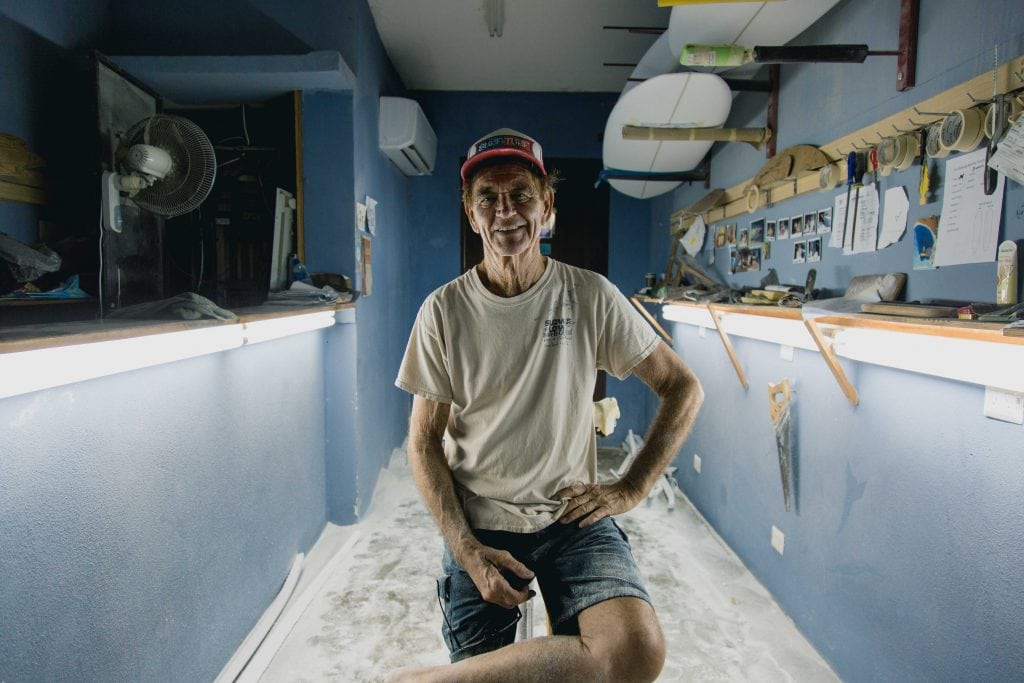
Robert August, a world surfing icon, says that he has made 41,000 boards in 50 years of being a shaper.Photo: César Arroyo
Robert says that he has made more than 41,000 boards. He is part of a group of people who were attracted to the province for its surfing. He never left. Along with other shapers like Marcelo Matos from Uruguay and Juan Diego Evangelista from Argentina, they have dedicated their lives to the waves and sought out an excuse that would keep them close to the beach forever.
Surfing Made at Home
The shapers who work permanently along this Santa Cruz coast insist that what they produce in the zone meets all the requirements to compete on price and quality with any board made abroad.
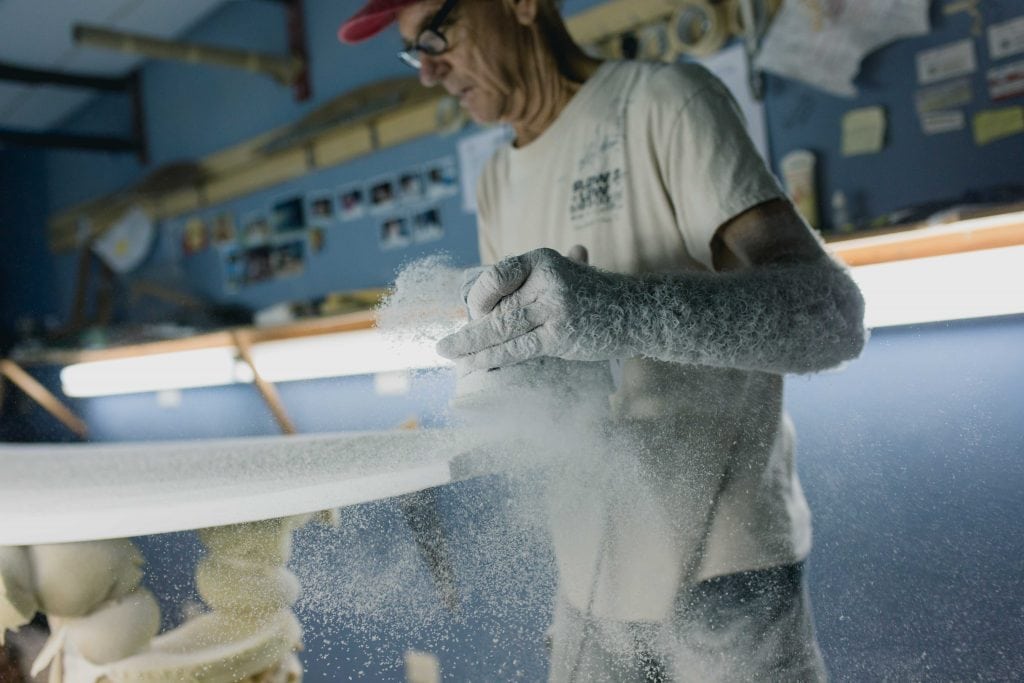
“If one side is a different size than the other, you may not be a good shaper,” says Robert August while he gives a demonstration in his workshop for a surf camp.Photo: César Arroyo
Juan Diego, owner of Che Boards, closed his factory in Canary Islands eight years ago in order to re-open it at the entrance to Tamarindo. While he had to start from scratch again, he says that the response has been better than he expected.
Now, the nine people who work in his factory produce between 700 and 900 boards per year. Some of them never see the light of day because they are packed and sent to countries like Argentina, France, Spain or Belgium as soon as they are finished.
Evangelista does the first part of the process. Between two and six times per day, he forms a polyurethane or epoxy foam. Or, in other words, he “shapes” the board. Then the rest of the team continues the process.
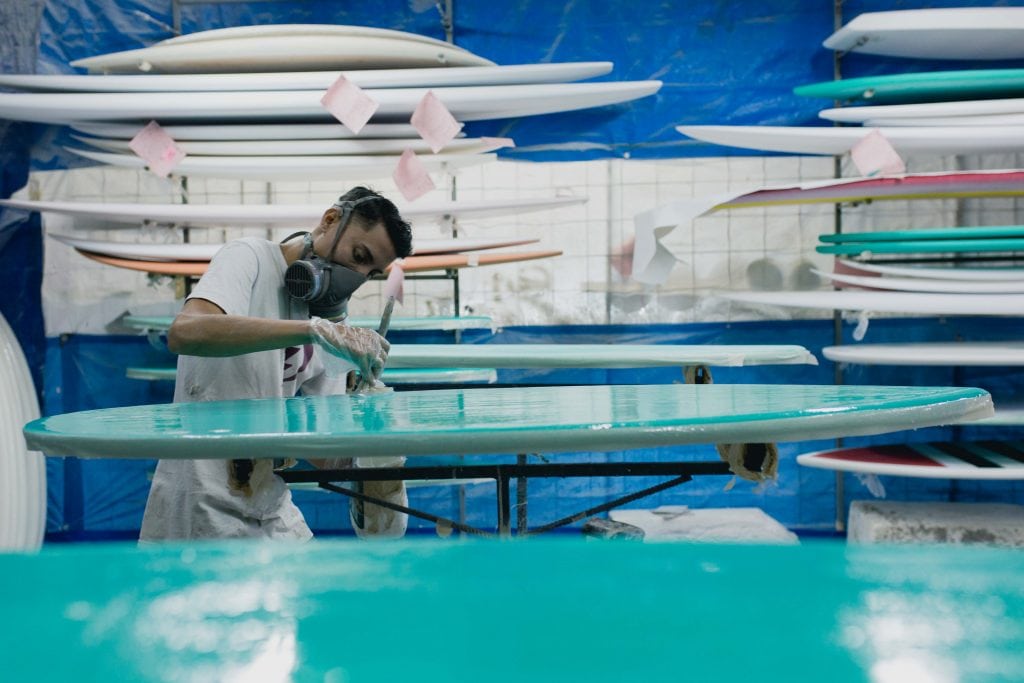
Building a board from scratch, depending on the model, can take between nine and 50 hours.Photo: César Arroyo
Next, the board is usually painted then laminated with fiberglass. After it dries, they sand it, install the fins and do the finishing. Depending on the board, the full process could take between nine and 50 hours.
But not all the shapers in Tamarindo work this way. Four years ago, Marcelo Matos started his program Surfcycled that rescues damaged surfboards, restores them and returns them to the water.
“A lot of boards end up in the trash if we don’t rescue them,” the 45-year-old Uruguayan says. He came to Tamarindo more than 15 years ago.
Part of his team’s philosophy consists of not buying new foam, but basing the whole production on boards that are going to be thrown away or foam that comes with some kind of factory flaw.
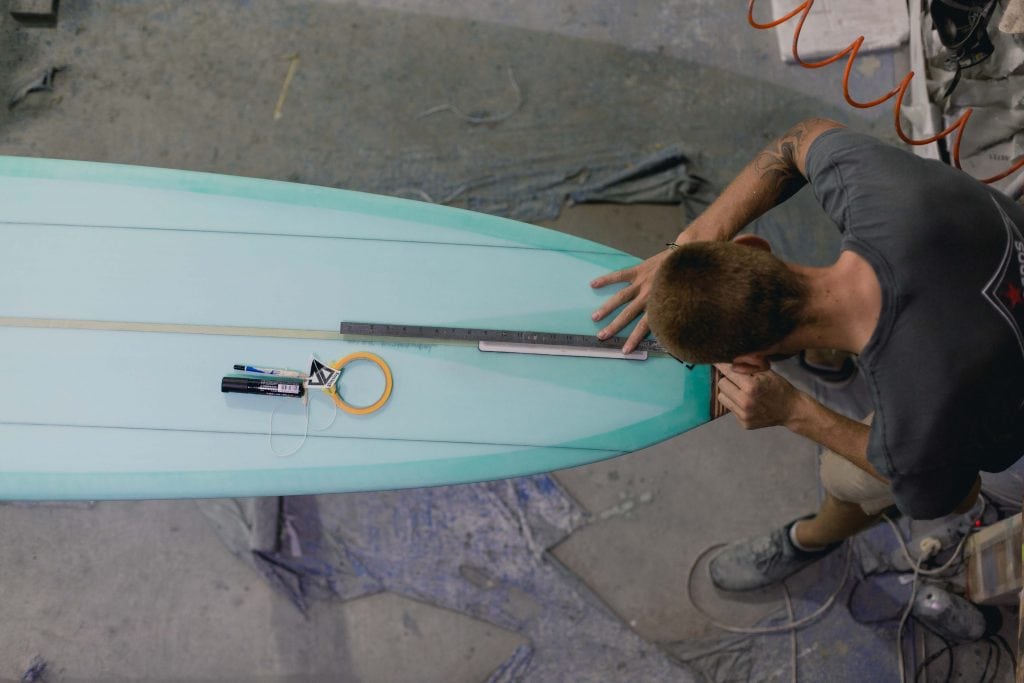
Making a board is a challenge of precision, symmetry and experience.Photo: César Arroyo
“It’s a community project. The idea is to not do all the production ourselves, but provide a source of employment for others related to surfing, too,” Matos says.
When they have the opportunity to use resin that dries in the sun, or with ultraviolet light, they use it to reduce the emission of contaminating vapors.
That’s why the low humidity in the province during the summer is ideal for making boards.
Stay Afloat
“The boards didn’t used to be Chinese. They came from California and they cost at least a thousand dollars,” says Juan Diego, adding that the combination of mass production and cheap labor makes it hard to produce a quality board.
There are people making millions of boards in China that have never seen the ocean.” Marcelo Matos, board shaper.
He points to one of the most expensive boards in the shop and insists that if the boards are going to be more expensive, labor must be, too.
The boards are pricey for a reason. The distributor for all the shapers brings the materials directly from California and the best boards in the world are made with those products.
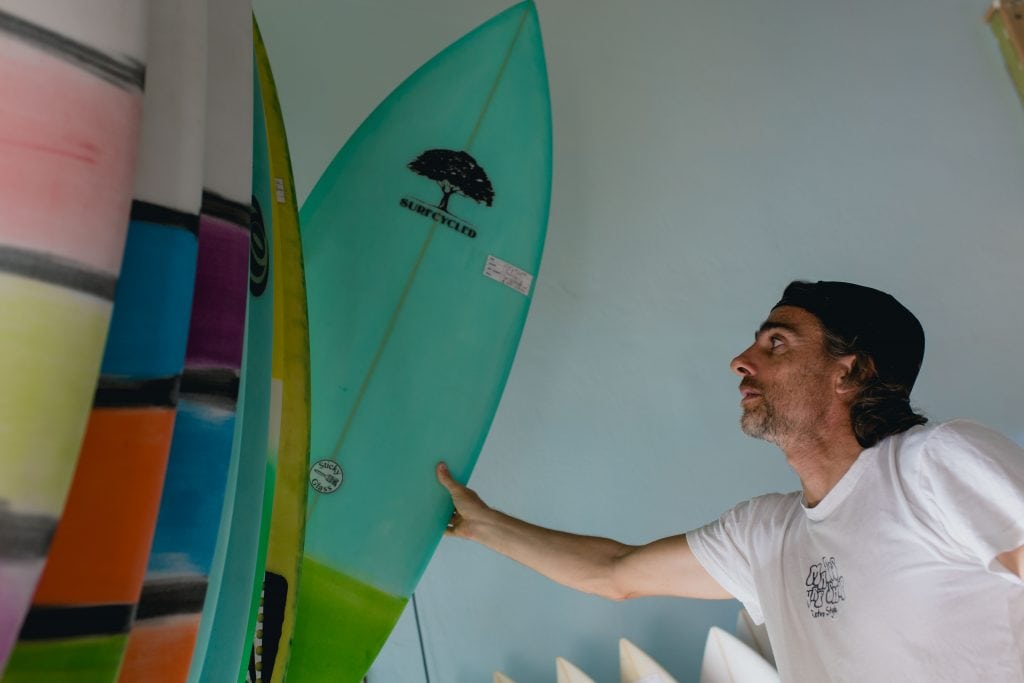
Marcelo Matos shows one of his boards from the Surfcycled program that makes surfboards out of damaged ones.
“Here, we don’t have any choice but to buy the best materials,” Marcelo says, as though they were sentenced to excellence.


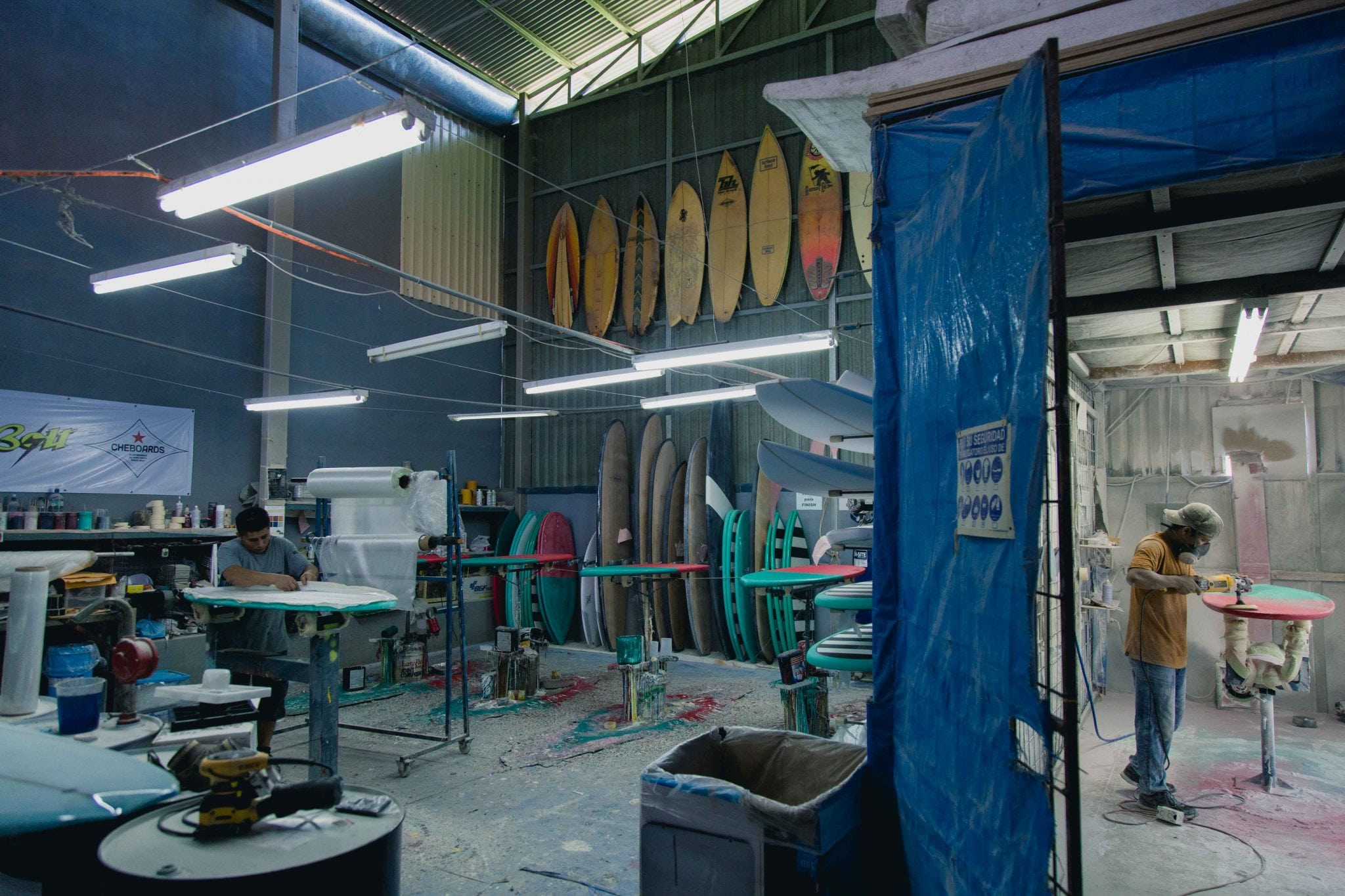
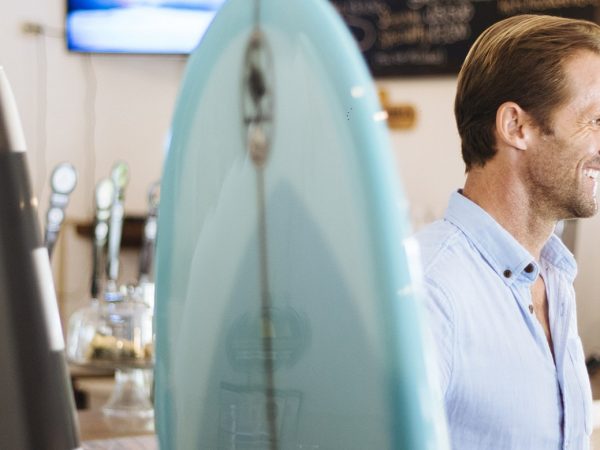
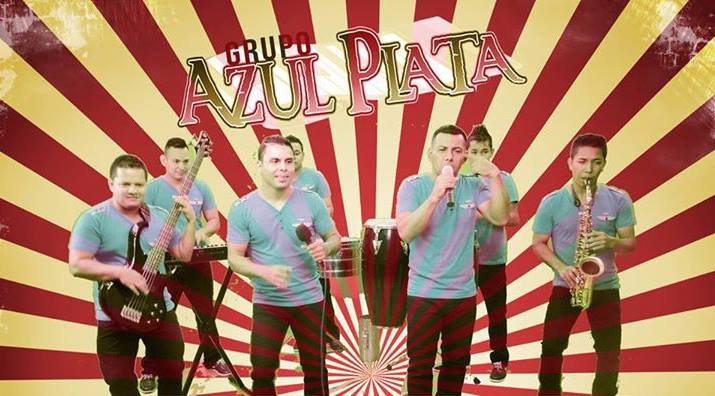
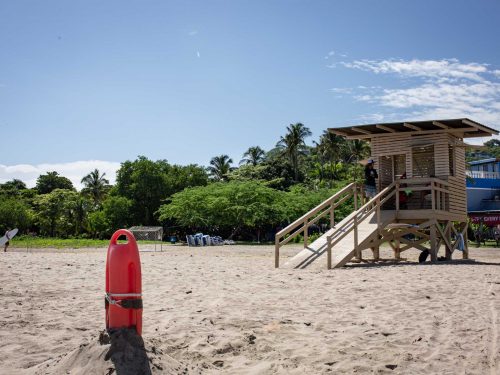

Comments